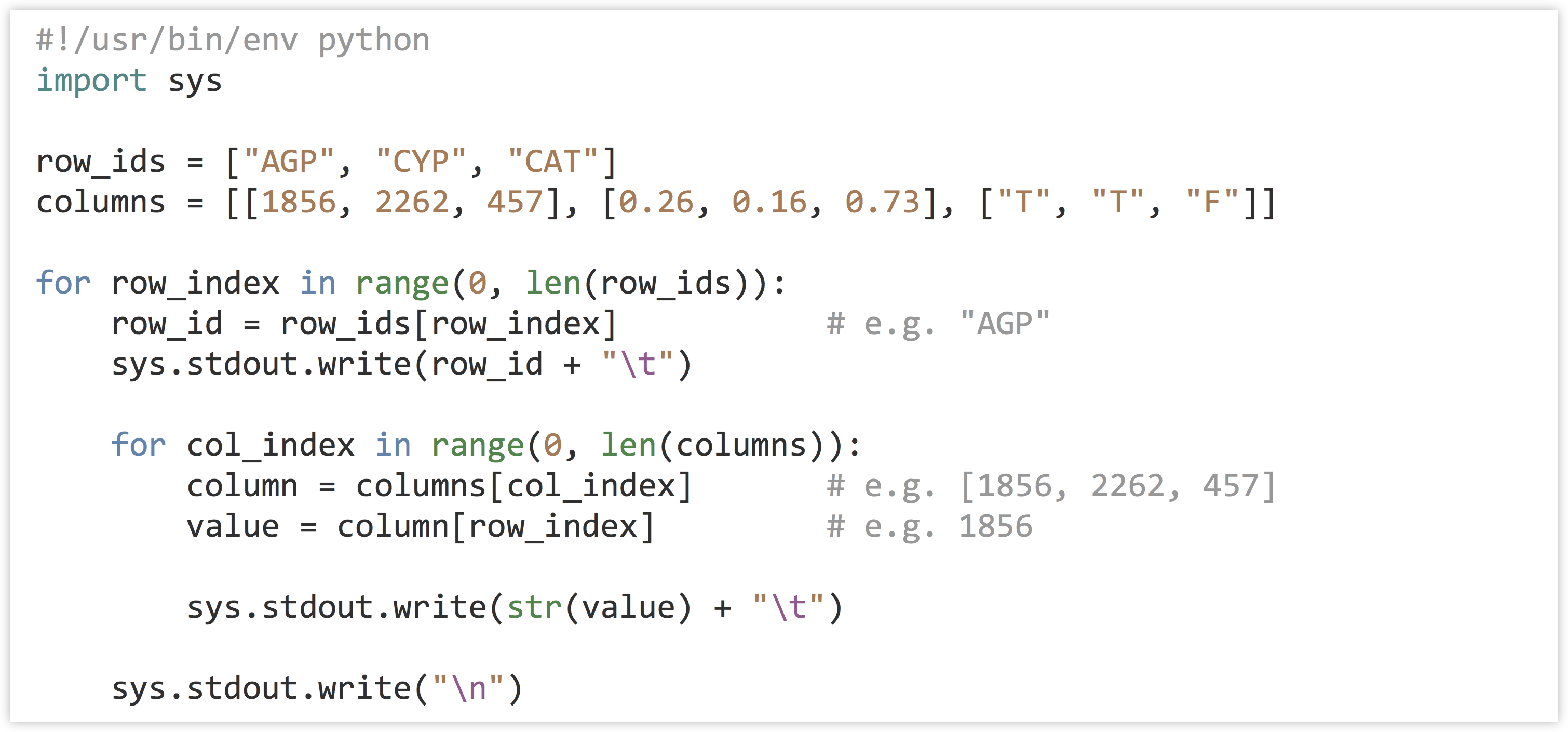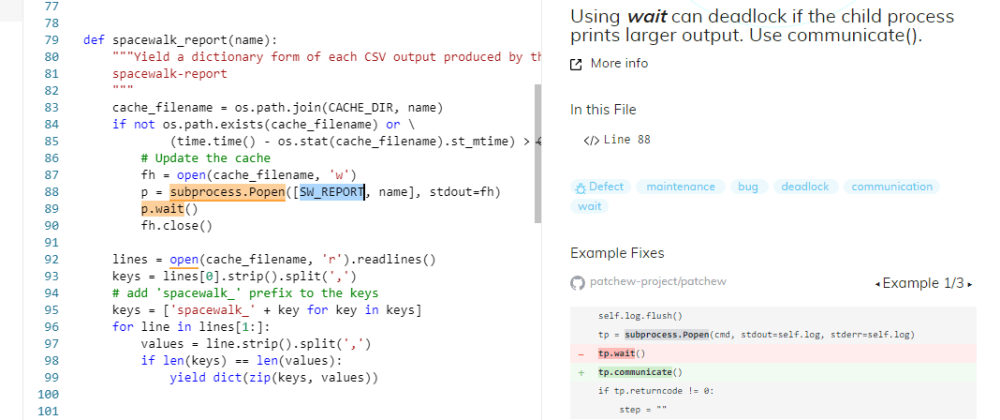
- PYTHON SUBPROCESS GET OUTPUT FROM STDIN HOW TO
- PYTHON SUBPROCESS GET OUTPUT FROM STDIN WINDOWS 10
- PYTHON SUBPROCESS GET OUTPUT FROM STDIN CODE
- PYTHON SUBPROCESS GET OUTPUT FROM STDIN PLUS
In your specific case, StringIO doesn't work, because the stdout The module description says you can use it to read and write stringsĪs files, not that you can use strings *everywhere* you can use files. Sorry, I jumped into a secondary level of theĭocs, and didn't see it all. Using subprocess without creating a temp file.
PYTHON SUBPROCESS GET OUTPUT FROM STDIN HOW TO
I am not sure how to capture the output of a command Output = Popen(, stdout=PIPE).communicate() FromĦ.8.3.1 Replacing /bin/sh shell backquote You should use the PIPE subprocess argument to capture output. "File-like objects which do not have a real file descriptor should not I thought that the idea of StringIO was that it could beįor basic file-like read and write. So how do I get the output into a string?

To compare with Unix, it’s as if there were a way to query the active encoding used by a terminal emulator and a program chose to use that instead of the LC_CTYPE locale category.On Tue, at 10:36 PM, Tobiah ", line 6, in ?įile "/usr/local/lib/python2.4/subprocess.py", line 413, in callįile "/usr/local/lib/python2.4/subprocess.py", line 534, in _init_įile "/usr/local/lib/python2.4/subprocess.py", line 840, in _get_handlesĪttributeError: StringIO instance has no attribute 'fileno'
PYTHON SUBPROCESS GET OUTPUT FROM STDIN PLUS
Using a console codepage as a preferred encoding isn’t documented as a suggested practice, plus it’s limited to Windows and just plain weird. That said, not many applications follow this pattern. If not kernel32.SetConsoleOutputCP(65001):Ĭmd, for example, uses the active console output codepage when translating to and from its internal UTF-16 text encoding. # Set the active output codepage to UTF-8 Raise ctypes.WinError(ctypes.get_last_error()) Kernel32 = ctypes.WinDLL('kernel32', use_last_error=True)

Python has no builtin function to change the device encoding, but it’s easy enough to implement via ctypes. However, they can be changed independently of each other via WINAPI SetConsoleCP and SetConsoleOutputCP. They both default to the same value, which defaults to the system OEM codepage unless modified in the registry. In Python, the console’s active input codepage is os.device_encoding(0), and the active output codepage is os.device_encoding(1). the console doesn’t use a separate set of active codepages for each attached process. The shell (cmd, pwsh, bash, etc) isn’t relevant to the encoding the child process expects, but the console (conhost) might be if the current process is attached to the same console as the child process.Įach process that attaches to a console shares the console’s active input and output codepages – i.e. This does not work in Windows environment (Python 3.7.0 and Python 3.8, cmd.exe) either a junction or a subst drive), a symlink, or a hardlink. You can work around such a problem by using a bind mountpoint (i.e.
PYTHON SUBPROCESS GET OUTPUT FROM STDIN WINDOWS 10
If not, then you may be at an impasse if you can’t change ANSI to UTF-8 (in Windows 10 only). We already know that the process ANSI codepage can’t encode the filepath, so check whether the program uses the console encoding (discussed below), UTF-8, or has a setting to force it to use UTF-8. In turn, the system ANSI and OEM codepages are based on the system locale by default, but can they be overridden in the registry – even to UTF-8 in Windows 10.) (The process uses the system ANSI and OEM codepages unless overridden to UTF-8 in the application manifest. “mbcs” (alias “ansi”) is the process ANSI codepage, and “oem” is the process OEM codepage. Python supports two locale-dependent encodings in Windows. Popen has an encoding parameter that can be used instead of text=True or universal_newlines=True. So I tried to remove universal_newlines=True and decode/encode process input and output manually. I will be grateful if you can point me in the right direction or provide small example. But can not find a crossplatform way to find out which encoding to use. cyrillic on German system) error is raised. And when file path contains non-ASCII characters which are not available with current system encoding (e.g. UnicodeEncodeError: 'charmap' codec can't encode characters in position 53-59: character maps to Īs I understand, this is because I’m using universal_newlines=True and Python tries to decode process output using locale.getpreferredencoding(False) that is not utf-8 on Windows. Unfortunately, this does not work in Windows environment (Python 3.7.0 and Python 3.8, cmd.exe) if file path contains non-ASCII characters, error is
PYTHON SUBPROCESS GET OUTPUT FROM STDIN CODE
Here is simplified code import subprocessĬommand =

So I use subprocess.Popen() to start a process and then write()/ readline() to send data or retrieve result. I’m working on a Python wrapper around 3rd part command-line tool and need to exchange data with it via stdin/stdout.


 0 kommentar(er)
0 kommentar(er)
